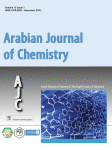ReviewNanoparticles: Properties, applications and toxicities
Under a Creative Commons license
Open access
Keywords
Nanoparticles
Fullerenes
Optical
Plasmonic
Toxicity
Abbreviations
NPs
nanoparticles
FESEM
field emission scanning electron microscopy
TEM
transmittance electron microscopy
XPS
X-ray photon spectroscopy
XRD
X-ray diffraction
DRS
Diffuse reflectance spectroscopy
FT-IR
Fourier transform infrared
SERS
surface enhanced raman spectroscopy
PL
photoluminescence
MA-SiO2
methacrylate-functionalized silica
TMD-NDs
transition-metal dichalcogenide nanodots
PNP
polymer nanoparticle
CNTs
carbon nanotubes
LSPR
localized surface plasmon resonance
CVD
chemical vapor deposition
PVD
physical vapor deposition
MRI
magnetic resonance imaging
POM
polyoxometalates
LDL
low density lipoprotein
MOFs
metal organic frameworks
PEG
polyethylene glycol
BET
Brunauer–Emmett–Teller
MMT
Montmorillonite
PEO
polyethylene oxide (PEO)
PLA
polylactic acid
RET
resonant energy transfer
PEC
photoelectrochemical
Peer review under responsibility of King Saud University.
© 2017 The Authors. Production and hosting by Elsevier B.V. on behalf of King Saud University.


